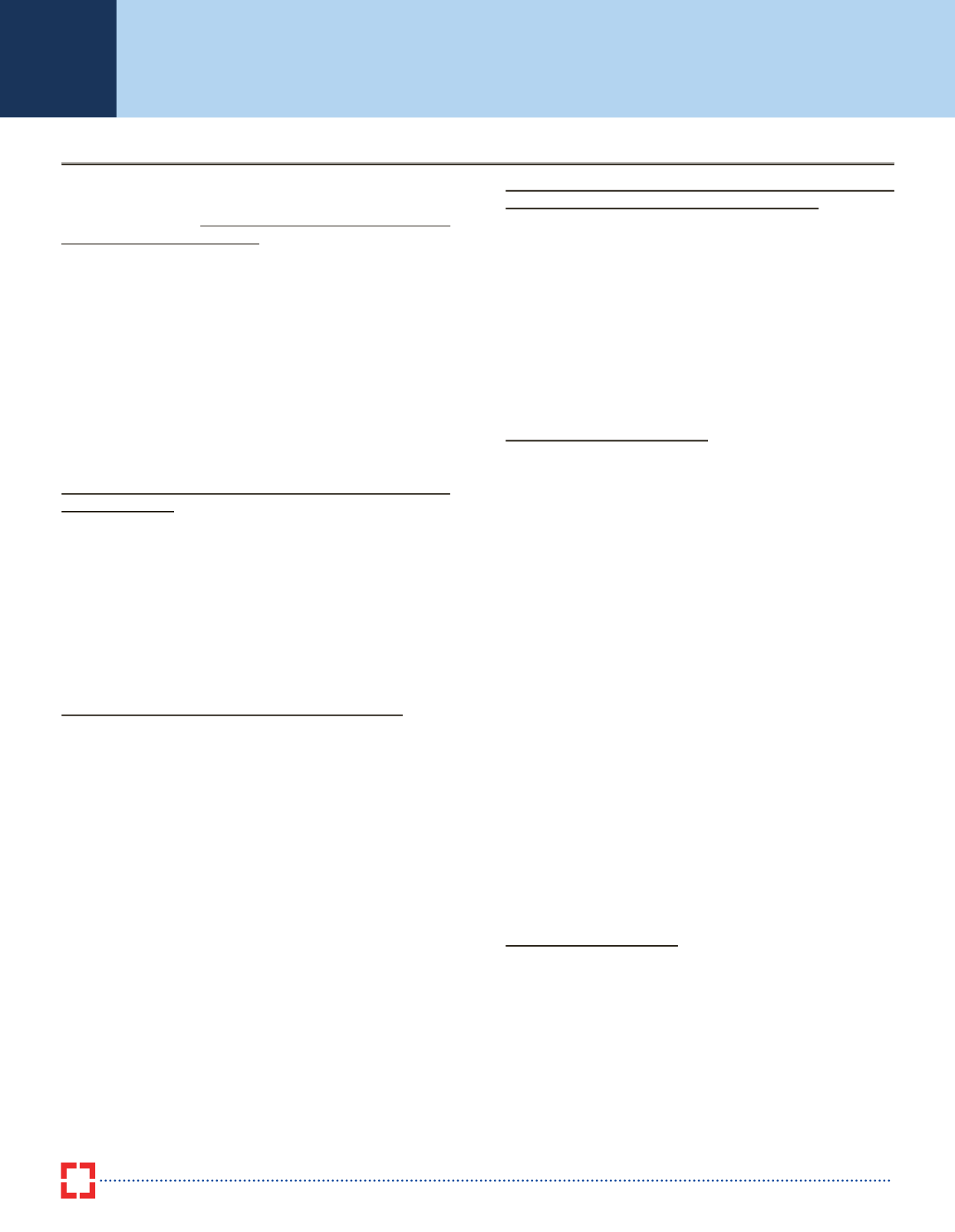
E
conomic
I
nsight
16
RBI changes its stance to “neutral”. Is this the end of the rate cutting cycle?
Belying market expectations, the RBI decided to keep the repo rate
unchanged at 6.25%. Pointing out possible upside risks related to a
sticky core inflation, the
RBI also changed its monetary policy stance
from “accommodative” to “neutral”.
• The reverse repo rate under the Liquidity Adjustment Facility
(LAF) was left unchanged at 5.75%, and the marginal standing
facility (MSF) rate and the Bank Rate at 6.75%.
• The RBI now expects inflation in the range of 4.0–4.5% for
H1FY18 and 4.5–5.0% for H2FY18.
• The GVA growth for FY17 is projected at 6.9% and at 7.4% for
FY18.
As regards economic growth, the RBI highlighted that the recent
reduction in marginal cost-based lending rates, remonetisation of the
economy and the government’s budgetary support to boost capex and
rural economy should help a sharp recovery in FY17.
Improving global growth, normalisation of monetary policy in the
developed world…
RBI:
“Inflation is edging up on the back of rising energy prices and a
mild firming up of demand”
As per the RBI’s assessment, both advanced economies and emerging
markets are likely to gain traction in 2017. Although there is uncertainty
related to US macroeconomic policies, in aggregate, the RBI believes
that global inflation is edging up on the back of rising energy prices and
a mild firming up of demand. This could lead to tightening of financial
conditions going forward, thus limiting the room to cut domestic policy
rates.
Demonetisation related slowdown likely to be transitory...
While the RBI acknowledged that high frequency indicators—
particularly automobile sales, domestic air cargo, railway freight traffic
and cement production— point to subdued economic activity in the
country, there are bright spots that have weathered the ‘transient
effects of demonetisation’. As per the RBI, growth is expected to
recover sharply in FY18 (to 7.4% from 6.9% in FY17), on account of the
following factors:
• Discretionary consumer demand held back by demonetisation is
expected to bounce back, starting from the closing months of
FY17.
• Economic activity in cash-intensive sectors such as retail trade,
hotels and restaurants, as well as the unorganised sector, is
expected to be rapidly restored.
• Demonetisation-induced ease in bank funding conditions and
subsequent reduction in lending rates (Marginal Cost of Funds
based Lending Rate (MCLRs)) should spur a pick-up in both
consumption and investment demand.
• Emphasis on stepping up capital expenditure in the FY18 Union
Budget and boosting rural economy and affordable housing
should contribute to growth.
Persistence of inflation, excluding food and fuel, could set a floor
to the downward movement in the overall inflation…
While the RBI is confident that headline inflation in Q4FY17 is likely
to be below the 5% target, it expects a pick-up in momentum from
Q2FY18 onwards. In this context, the RBI has signalled worries about
the following factors:
• Hardening profile of international crude prices;
• Volatility in the exchange rate, on account of global financial
market developments, which could impart upside pressures to
domestic inflation;
• The fuller effects of house rent allowances under the 7th Central
Pay Commission (CPC) awards.
Overstating the inflationary risks?
In the past, the RBI has downplayed the impact of HRA under the 7th
pay commission awards, which could have a one-off effect on headline
inflation, but is likely to dissipate after a year of implementation.
Bringing back the HRA variable into its monetary policy equation
appears to be a departure from its earlier stance. Moreover, in our view,
while the rupee is likely to depreciate in FY18, the downside movement
is expected to be gradual, with only a minuscule pass-through impact
on domestic inflation. We believe that markets have read too much into
President Trump’s campaign rhetoric and are now likely to distinguish
between pure posturing and policies that will have an economic
impact. In this regard, it is important to note that the US economic
recovery still remains tepid, and going forward, President Trump is
likely to be softer and selective on the fiscal expansion agenda. This
should limit the number of rate hikes from the US Federal Reserve (two
in our view for 2017) and also the extent to which the rupee could
depreciate going forward.
Even if the exchange rate risk and the impact of HRA allowances are
possibly overstated in our view, they are the ‘core’ components of
the retail index and could prevent inflation from falling substantially;
they have thus attracted the maximum attention of the RBI. The
core component of inflation—which ignores things like fuel and food
and focuses on pure ‘demand-driven’ inflation—has proven to be
remarkably sticky until now. This partly reflects structural deficits in
the market for services like healthcare and education that are unlikely
to go away soon. It is this factor that the RBI seems to be worried
about and has thus decided to play safe.
End of the rate cutting cycle?
As the deflationary impact of demonetisation still unfolds, until a clear
picture emerges about international commodity prices, the RBI is likely
to remain ‘on hold’ in the near-term.
While we do not yet call it the
end of the rate cutting cycle in India, we wait for further clarity on
international commodity prices and US macroeconomic policies to
see if change in the dynamics on these fronts could open up room
for one more rate cut in 2017.
For now, as indicated in the RBI’s
policy statement, further relief in lending rates would be dependent on
the government’s measures on the financial sector—recapitalisation
of the banking sector, resolution of the NPA problem and calibration of
interest rates on small saving schemes.


